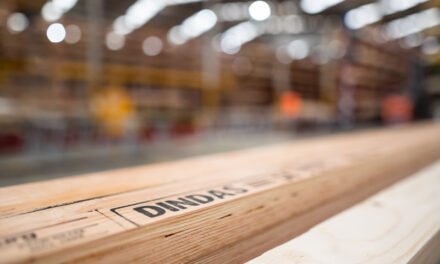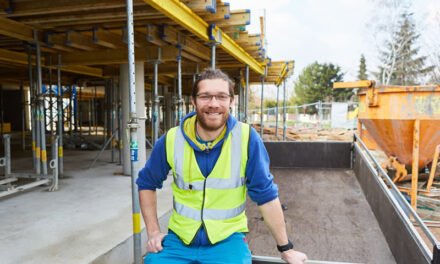Timberlink’s highly anticipated CLT and GLT products are on their way, with the Tarpeena plant beginning construction and the launch of a new brand: NeXTimber.
Australia’s move into leadership in mass timber construction has taken another big step with Timberlink launching its new CLT and GLT brand, NeXTimber.
This building solutions range of EWP is highly anticipated in the market and the brand announcement is coupled with the commencement of site works at Tarpeena in South Australia. There, a $63 million capital investment will see NeXTimber manufactured on Australia’s first combined world-scale softwoods CLT and GLT manufacturing line. Production will begin in 2023, with 27 full-time permanent jobs created on opening and 50 when the plant reaches full output.
“Site works at Tarpeena are underway,” says Ian Tyson, Timberlink CEO. “The area has been cleared and defined for construction. Foundations and in ground work are due for commencement in early 2022, as planned. All machinery has been ordered and confirmed and is available to meet our project timeframes. Overseas manufacturing has commenced with some key pieces of equipment already completed.”
It’s a timely entrance for the new supply. EWP have been in high demand, thanks to both booming Australian construction and limited supply following issues with transport from Europe and North America and increased demand in the US in particular.
Tyson says, “We expect that the demand for engineered building solutions will continue to grow and that, through greater awareness of the benefits of timber as a natural material, more developers, architects and builders will embrace this solution, as is occurring throughout the world.”
Despite Covid slowing or postponing some local mass timber builds in 2020-21, it remains a fast-growing sector, particularly for the educational market, albeit one that is growing off a low base. The speed of build time, an attractive set of eco credentials and the ability to plan the building’s efficiencies thoroughly from first concept and construction through to daily maintenance has carved out a strong following.
“CLT is a building solution that has a specific set of benefits and values to its customers and end users,” says Tyson.
“Price is reflective of an integrated supply model with a specific set of benefits for the project. It’s not about comparing a building solution to individual building elements. We believe the benefits of a sustainable timber building solution are now much better understood when compared to alternate material solutions. The solution always has to be relevant to the type of structure and the broader objectives and deliverables that each project requires. However, it’s a very large construction market and timber building systems are finding their place within this.”
Maturing the market
While we’ve all put our crystal balls away, there are some lessons from 2021 that will continue to affect Australian building.
“The concept of sovereign risk to our country for supply of critical products is much better understood than it was before the current issues associated with off-shore supply,” Tyson says.
“There is a need for supply of timber from local and imported sources and this has been the case for decades. However, the more complex and customer-integrated the manufacturing to customer design requirements are, the greater the benefit of local, flexible and responsive supply. CLT is such a product.
More broadly, there is a greater focus from state and federal governments in particular on working with and supporting critical industries such as timber. “Ultimately this will enable products like CLT to grow from this locally based customer responsive and integrated model,” says Tyson.
Meanwhile, future customers are already able to engage with NeXTimber as a materials solution for their projected builds. Although supply is still 12+ months away, early contractor engagement models mean many mass timber builds are planned in detail at least 12-18 months before the first physical manifestations of the projects.
“We’ve just completed the key tools required for discussions with customers that provide the level of technical specifications that are needed in the early part of a design process. These are launched as part of the NeXTimber brand launch,” Tyson says.
“Over the next year we will be working with the market at all levels to build a pipeline of orders that will benefit from our investment. As we lift the capability of Australian CLT and GLT, we’ll be seeking to support growth in the market for this product category.”
While NeXTimber is just one part of Timberlink’s ongoing growth, Tyson says it’s emblematic of the way timber is repositioning itself within the community. “Timber has a great story that is being told and its benefits are much better understood by more of society,” he says. “The current generation of new homeowners are especially keyed into this and the broader construction industry and all its professional linkages now have a greater understanding of the benefits timber provides. Those include sustainability, carbon storage, renewability and its specific benefits in construction as a preferred solution for many project types – especially engineered building construction systems using CLT.
“There is more to be done of course, and with NeXTimber active in the market we plan to support this.
“There has never been a better time to invest in the future of timber.”
For more on NeXTimber, visit www.nextimber.com.au
Image: NeXTimber products offer superior strength that allows for long, uninterrupted spans, which go up quickly and minimise work time on site.












